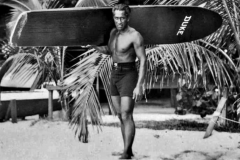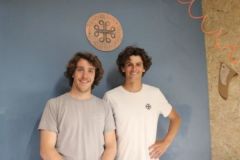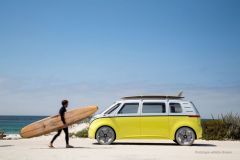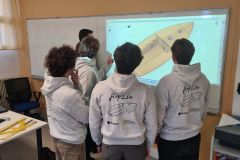Behind the idyllic image of the eco-surfer lies a far less glamorous reality: almost 95% of the materials used to make a surfboard come from the petrochemical industry. This production has a significant environmental impact in terms of carbon footprint. The Paradoxal Surfboards project, recently awarded the Ocean Pitch Challenge 2023, offers an innovative, environmentally-friendly alternative, with 100% biosourced surfboards, 3D-printed from green and brown algae. Breton entrepreneur Jérémy Lucas describes his involvement.
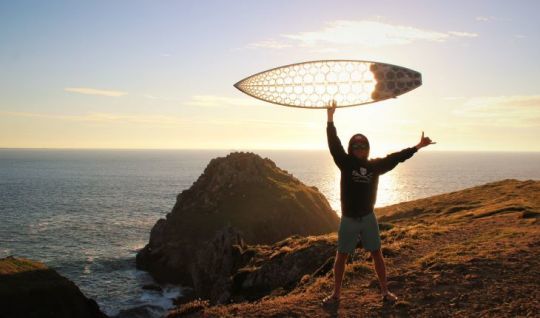
Can you give us an overview of the genesis of your project? Are other players involved?
The origins of the project lie in three circumstances:
- In 2020, as co-president of the YSTOPIA association in Douarnenez, I was involved in highlighting initiatives to preserve biodiversity and the ocean. At the same time, as co-director of a mechanical design consultancy, we were using 3D printing to create various objects, whether decorative, for model making or to replace rare parts. Making a profit from this part of our business proved complex, due to the time-consuming nature of made-to-measure. At the time, my aim was to refocus our business exclusively on objects for which we had control of the upstream design.
- One day, when delivering an order to one of our customers, she asked me about the material used in our 3D prints. I explained that it was a plant-based, petroleum-free plastic made from corn starch (PLA). With her in-depth knowledge of the subject, she pointed out that the PLA used came from the USA, the world's largest producer, was genetically modified, caused damage to biodiversity zones and that growing corn required a significant amount of water... in short, not a very environmentally-friendly material! So the idea emerged to create our own eco-designed 3D printing material locally.
- A few days later, while surfing on the Ris beach in Douarnenez, I noticed that swimming was temporarily prohibited due to the proliferation of green algae and the associated health risks, a recurring problem in Douarnenez. Despite the abundance of algae, I decided to surf the spot, but it left me bedridden for two days. This episode raised my environmental awareness, and prompted me to do my bit to tackle the problem of stranded green algae.
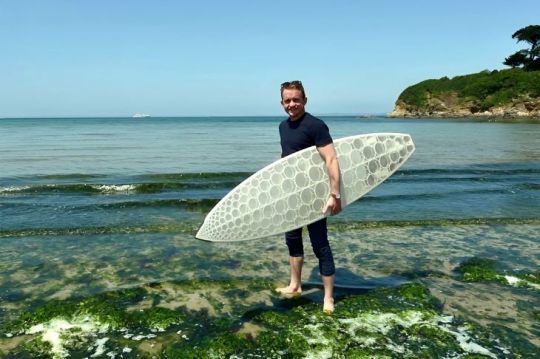
And then, eureka! The idea emerged: to use stranded green seaweed to create a 3D-printable thermoformable material, with a view to manufacturing an object with a previously mastered design: a surfboard made of seaweed! And so the Paradoxal Surfboards project was born.
Since then, Paradoxal Surfboards has become a member of the French maritime cluster and Respect Ocean. It has benefited from triple support: from the Finistère Mer Vent incubator, the Quimper Technopole, and the Blue Living Lab.
Tell us more about the technical design of your surfboards. Why the honeycomb shape?

This project is based on a recipe that is both simple once established, but relatively complex to implement, requiring multi-skilling. Three key elements were essential:
- Board design - Industrial drafting and CAD/CAM :
Designing a 3D printable surfboard from scratch was a major challenge. We had to find a balance between an innovative design, optimizing the amount of material used to reduce production costs, respecting production deadlines, while guaranteeing the board's performance, its final weight, and a balanced distribution of loads with a minimum of post-production. The success of the business model depends on it.
- 3D printing and new material development
Once the board had been designed, it was printed using a high-volume 3D printer. For the first prototype, the core of the board, replacing the traditional foam blocks, was printed in two parts, then assembled by thermo-clipping. Configuring the printing parameters proved complex, requiring several iterations to achieve a high-performance final product. Although PLA was used for this prototype, a new thermoformable material based on powdered green seaweed from strandings and recycled Dyneema from ocean racing boats is currently being developed for future versions.
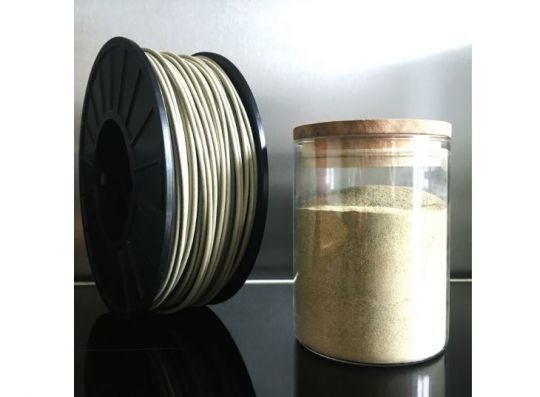
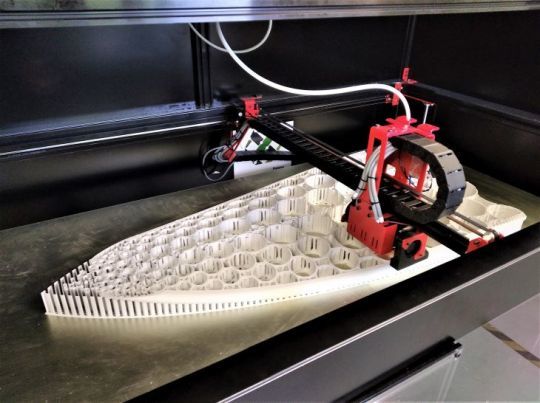
- The shaper's expertise in layering
Once the internal structure had been printed, the crucial lamination step was necessary to make the board watertight. This involved covering the board with a layer of fiber and impregnating it with resin. This lamination phase was particularly delicate, especially in view of the relatively large structural cells. To meet this challenge, a reverse lamination approach was adopted, with CNC molds machined from the negative shapes of the board to integrate the structure before applying the lamination. This complex step required fruitful collaboration with engineers and technicians specializing in composite materials in Brittany.
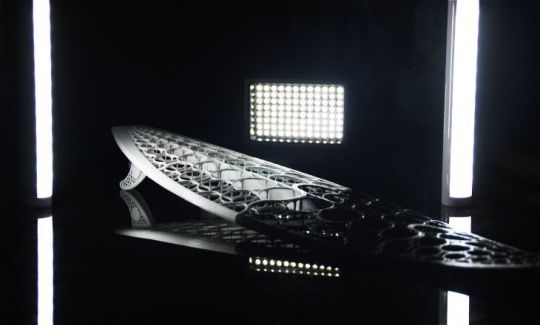
3D printing enables Paradoxal Surfboards to present surfboards with unique, translucent designs, thanks to a honeycomb structure. Given that the company's vocation is to 3D print surfboards from stranded seaweed, we found it natural to draw inspiration from living things, in particular seaweed, to design the internal structure of our boards. After watching a number of lectures on biomimicry, we came across a photo of a diatom, an algae found throughout the world. On a microscopic scale, it has exactly the same shape as a surfboard, with circular cells. So we decided to use this as the basis for the heart of Paradoxal Surfboards.
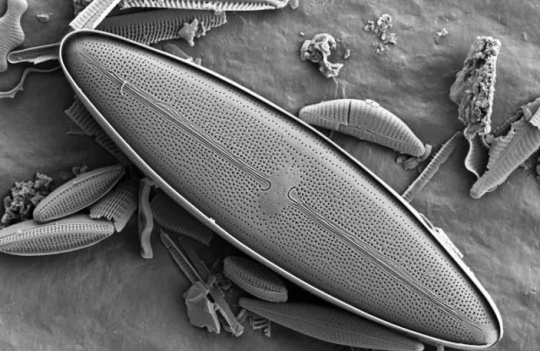
Did you encounter any technical challenges when building the cornstarch surfboard prototype?
We had to overcome a number of technical challenges, including biomimetic design to ensure mechanical strength, optimal structure weight, amount of material used, printing time and associated costs. Trajectory optimization was also crucial.
The final material now looks complete. Do you still have some fine-tuning to do before production?
We are currently working on optimizing the overall system for manufacturing the surfboards, including the final material. Potential adjustments are underway to ensure efficient and optimal production.
How much seaweed do you need to harvest for a single plank?
For one board, we use around 2 kg of raw seaweed for the internal structure, which, after cleaning, drying, grinding and extrusion, is reduced to 1 kg. This approach contributes significantly to reducing our carbon footprint.
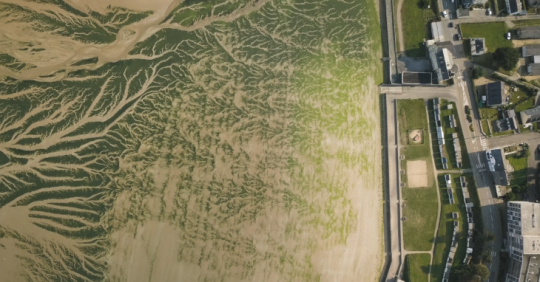
What about the performance of boards made from green and brown algae?
Board performance is outstanding thanks to the innovative internal design. The fiber on the hoops provides chop cushioning, and the flex of the sargasso material provides rebound and responsiveness comparable to PU. The location and pinch angle of the daggerboards also play an essential role in the boards' maneuverability.
When is the launch scheduled? Do you have any other printing projects beyond surfing?
Pre-sales start early next year. We also plan to explore other water sports such as paddling, kayaking, windsurfing, wing foiling... We're open to new 3D printing possibilities for a variety of applications.
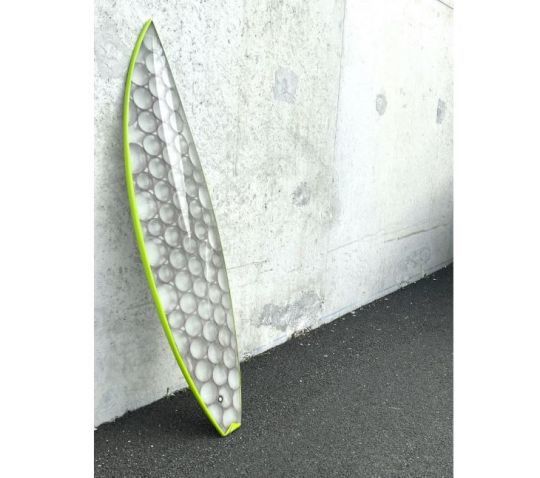
The forthcoming launch of these biosourced boards promises a significant change in the surfing industry, encouraging surfers to engage in a more environmentally-friendly practice. Paradoxal Surfboards is positioning itself as an avant-garde brand contributing to a greener economic transition, while offering eco-performance surfboards.

 /
/ 






